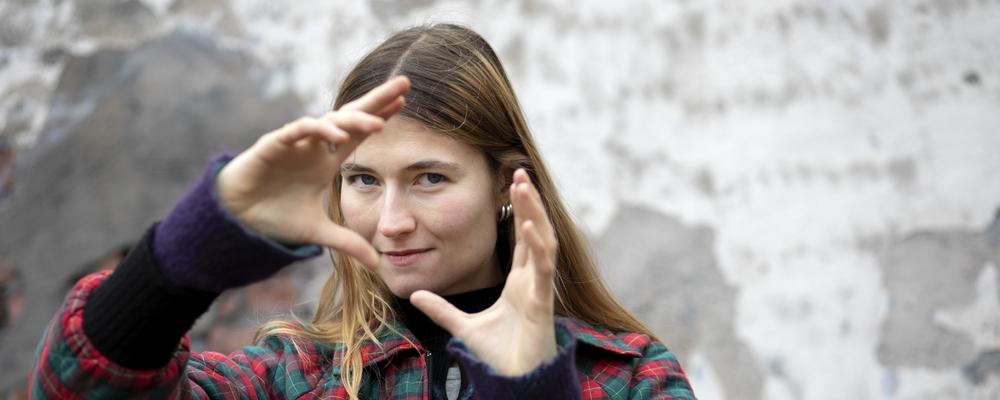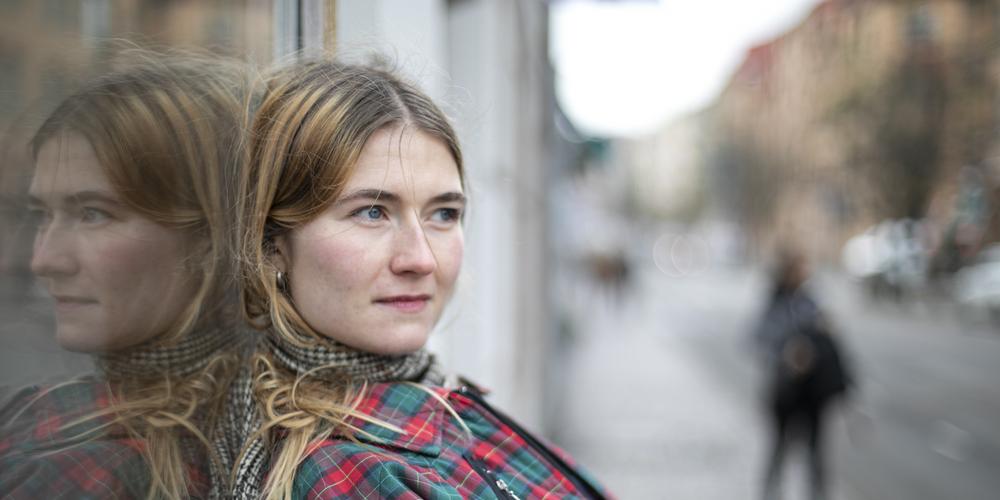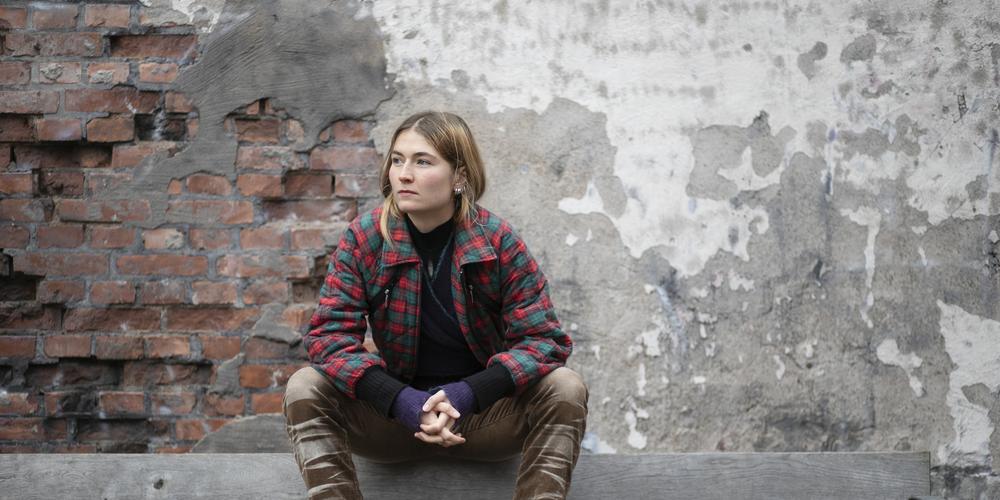
- Home
- News and events
- Find news
- Emotions and microsociology in focus when Majse creates film
Emotions and microsociology in focus when Majse creates film
When Majse Vilstrup first got to HDK-Valand, she was rather unaccustomed to talking about her film work. The art schools she had attended previously had not focused as much on encouraging students to discuss their ideas with one another. “HDK-Valand was one step closer for me in learning to share what I do,” she says.
After several years studying, first in Austria and then in Sweden, Danish filmmaker Majse Vilstrup is back home in Copenhagen again. She is still immersed in all the practicalities that typically come with moving, but at the same time she’s working with the distribution of Being Seen Seeing, the short film she made at HDK-Valand, where she earned a master’s degree in film last spring.
“At the moment I’m working on adding the subtitles, since I plan to submit the film to various film festivals, including the Berlinale in Germany,” says Vilstrup.
The film has a documentary style and is set in Nørrebrogade, a street in Copenhagen. It’s a street that’s characterized by a constant stream of impressions, people and brief encounters. Vilstrup says it feels a little like a catwalk, and she concludes that the atmosphere in the street does something to the interpersonal interactions that take place there.

What do people say when they meet? What feelings can we discern in their faces? What signals do their little gestures convey?
“It’s this kind of micro-sociology that interests me,” she says. “The interpersonal communication. I collect little observations, details and what they have to tell us in a general sense.”
Being Seen Seeing is Vilstrup’s first dramatic film. Her previous films were all documentaries. One example is the short film Supply and a Million Times Goodbye, which she showed last year at the CPH:DOX documentary film festival. That film, too, focused on on sociology.
“It was shot inside Denmark’s largest auction house,” she says. “I was inspired by the sociologist Erving Goffman and his ideas about how we can view everyday life as theatre.”
As a child, Vilstrup spent most of her time drawing and painting. But she was still young when she moved to Vienna to study at the Academy of Fine Arts, and her interest in film had already begun to take over.
“There weren’t many people working with film in the way I do, and I often felt alone and misunderstood,” she says. “But it was when I went to Malmö Art Academy that I realised that I was lacking some other way to talk about and develop film in the context of exhibitions. Usually there was more talking about the physical installation than the material and content of the film.”
It was longing for the world of film and all its manifestations that inspired her to apply to the master’s programme in film at HDK-Valand in Gothenburg. When Vilstrup learned that the director Ruben Östlund had attended the school, she was even more motivated.
“I think his film Involuntary is totally fantastic,” she says.
At HDK-Valand, she finally got a chance to devote all her strength and energy to filmmaking. She realised that her earlier studies had helped her develop the ability to be autonomous. At the same time, her classmates provided her a context.
“The dynamics of the class is probably what I got the most out of,” she says. “We were involved in one another’s projects and got to know every part of a production, which I think is good. It was valuable to get an understanding of the roles played by the other members of a team.”

For the time being, Vilstrup is happy to be back in Copenhagen. She’s still settling in, but she can tell that this is where she’s going to be living and working for the foreseeable future.
Next on her agenda is a music video for the Scottish-Danish artist Clarissa Connelly.
“It’s my first time directing a music video, and it’s going to be fun,” she says. “It feels good to have gotten a job immediately after moving back to Denmark.”
But the big project is to keep working toward the dream of making a feature film.
“I’ve worked as a personal assistant for a girl with multiple sclerosis,” she says. “Together we’re working to develop a different story about disability – not the kind of narrative the audience will be expecting at all.”
By Camilla Adolfsson

